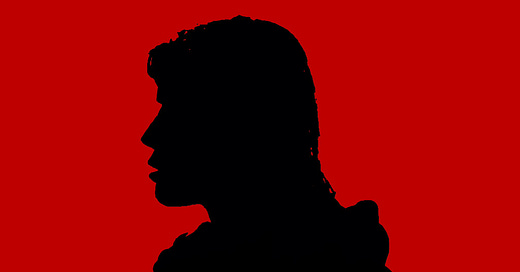The final film of the Three Colours trilogy, and Kieslowski’s final film all together, is suprisingly, one of the most optimistic ones. Red is not the colour of passion, or of sacrifice, it is, instead, the colour of brotherhood. It is hard to discern exactly what this term suggests, a sense of empathy, vicinity, that is neither amicable or sentimental. It is the relationship that occurs between young model Valentine (Irene Jacob) and a retired judge (Jean-Louis Trintignant) in modern Geneva — ideally, the geographical center of Europe, one of the unspoken protagonists of the trilogy itself.
The film opens on one of the most exquisite postmodern sequences of Kieslowski’s cinema: a phone call, followed throught the cables that lead through the sea, an instrument that allows human connections to reach incomparable distances. It is a call with no answer though — the human remains disconnected, despite these tools. Technology has only sporadically appeared in Kieslowski films, through the computer in Dekalog I or the tiny screen Julie receives to see the funeral of her family in Blue. Red’s entire storyline revolves around technological innovations, and their potential dangers of invading privacy. Sure, in 1994, Kieslowski still finds himself in a much more analogical world than today, but, as with Dekalog I, his conclusions remain somewhat contemporary.
Valentine, a model, often appears as an object of observation: a giant billboard showing her in a very emotional expression becomes the object of voyeurism for males in the film, eliciting a sort of fascination that is resolved in the ending shot. Yet, her character goes far beyond her appearance, being a moral compass for the entier trilogy. A recurring shot of an elderly woman trying to throw a bottle in a garbage can appears in each installation of the Three Colours trilogy, yet Valentine is the only one that actually helps the lady.
The potentiality that remained abstract in Kieslowski before, becomes incarnated in the storyline of Three Colours: Red. It could be simply described as a set of coincidences that occur in the film, but thematically, the film’s mainstory and the subplot involving Valentine’s neighbour Auguste seem interconnected: it is almost as if, Auguste’s life is an incarnate of an alternative possibility for the judge’s youth, a second chance that he cannot achieve due to his age. He and Valentine feel an affinity that is reshaped by their vast age difference and never even question attraction to each other, but Auguste might be exactly what the judge was like if he was younger, and Valentine might be the person he never had the chance to meet. the epilogue of the film (which also contributes to finally reunite the three films and provide a complete picture of their interconnection) finally allows the possibility to concretise, to departure from its aleatory nature.
This is why, ultimately, Three Colours: Red is a film with immense hope, a hope no other Kieslowski film has; the absurdity of a reality ridden with uncertainty is finally erased, to allow for his filmography to end on a good note.
RATING: 5/5
-
Original title: Trois Couleurs: Rouge
Directed by: Krzysztof Kieslowski
Country: Poland | France
Year: 1994
Runtime: 98 min.







